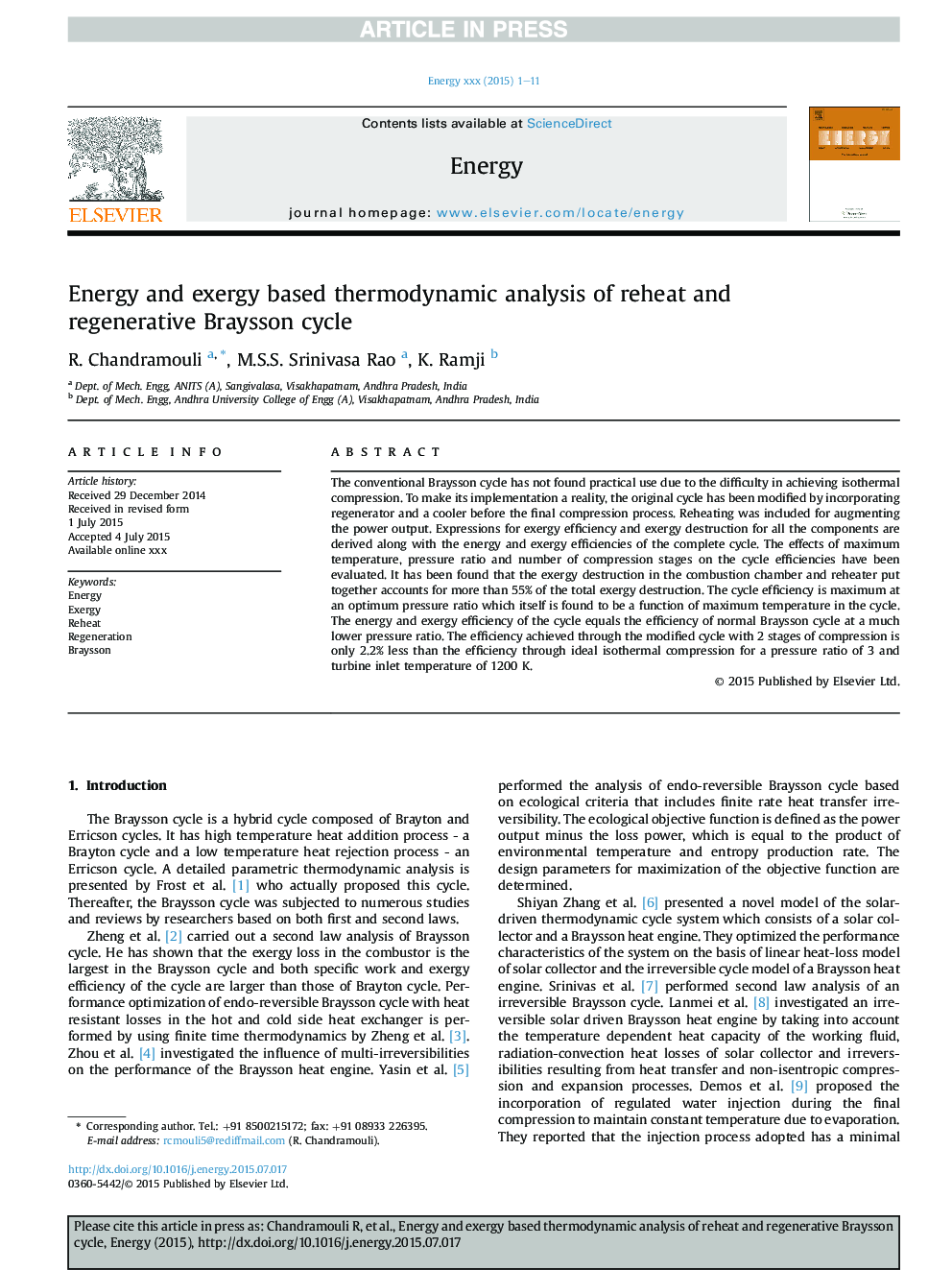| Article ID | Journal | Published Year | Pages | File Type |
|---|---|---|---|---|
| 8074629 | Energy | 2015 | 11 Pages |
Abstract
The conventional Braysson cycle has not found practical use due to the difficulty in achieving isothermal compression. To make its implementation a reality, the original cycle has been modified by incorporating regenerator and a cooler before the final compression process. Reheating was included for augmenting the power output. Expressions for exergy efficiency and exergy destruction for all the components are derived along with the energy and exergy efficiencies of the complete cycle. The effects of maximum temperature, pressure ratio and number of compression stages on the cycle efficiencies have been evaluated. It has been found that the exergy destruction in the combustion chamber and reheater put together accounts for more than 55% of the total exergy destruction. The cycle efficiency is maximum at an optimum pressure ratio which itself is found to be a function of maximum temperature in the cycle. The energy and exergy efficiency of the cycle equals the efficiency of normal Braysson cycle at a much lower pressure ratio. The efficiency achieved through the modified cycle with 2 stages of compression is only 2.2% less than the efficiency through ideal isothermal compression for a pressure ratio of 3 and turbine inlet temperature of 1200Â K.
Keywords
Related Topics
Physical Sciences and Engineering
Energy
Energy (General)
Authors
R. Chandramouli, M.S.S. Srinivasa Rao, K. Ramji,
